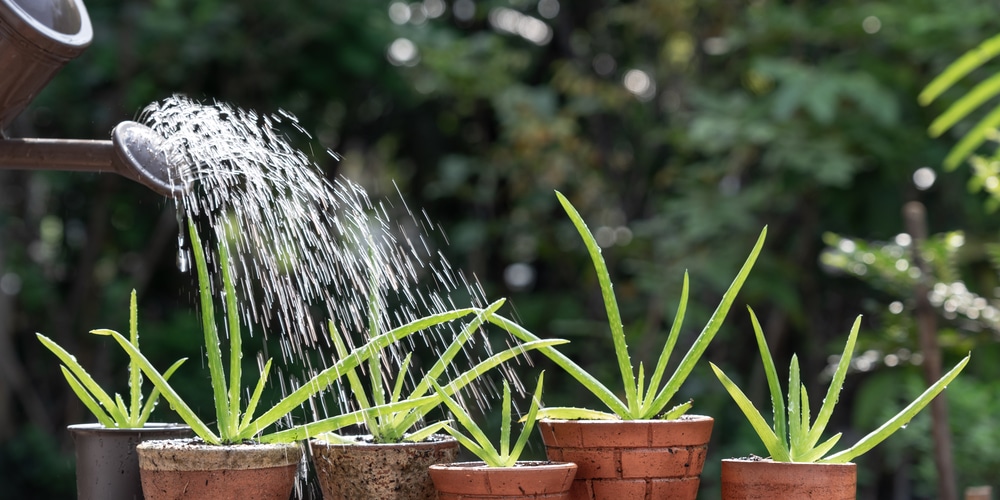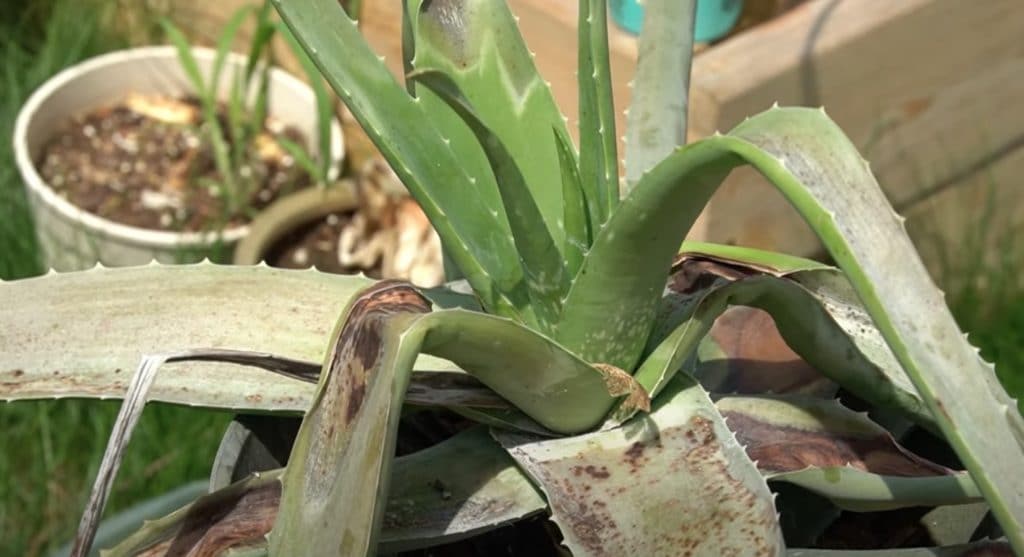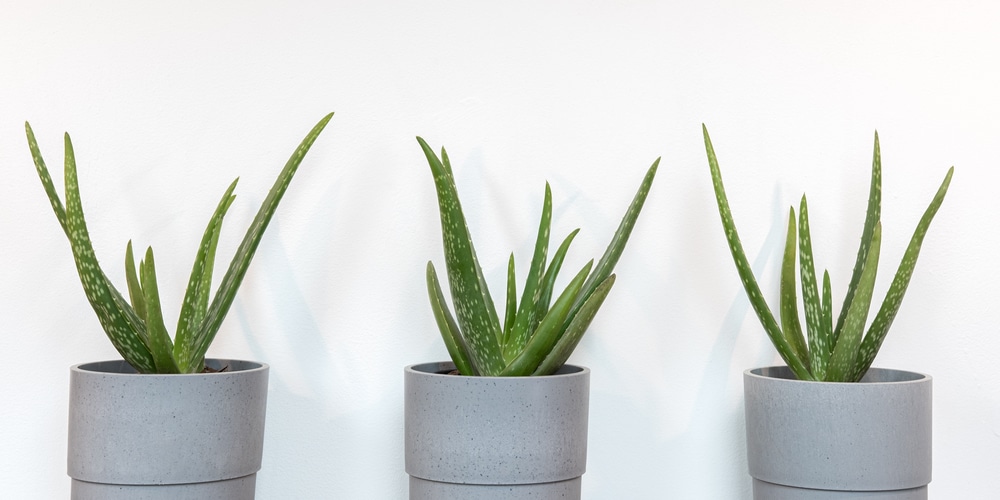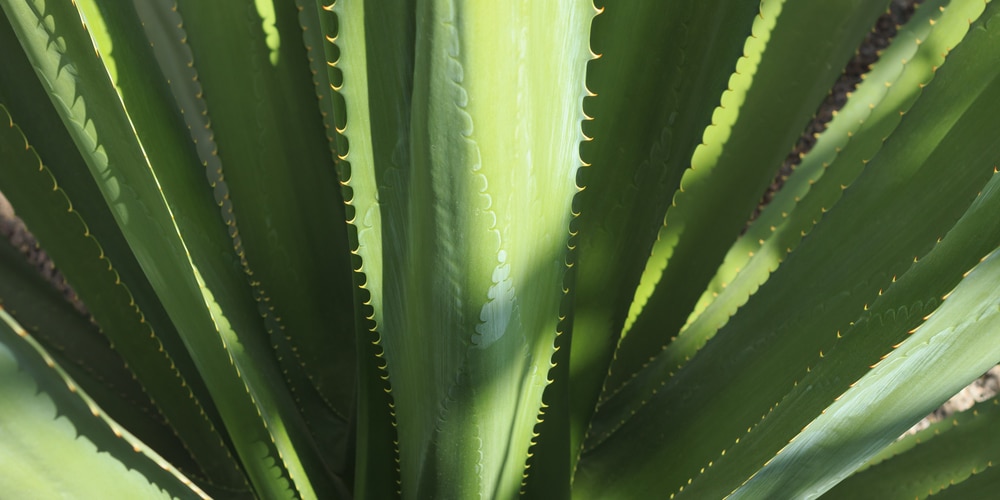There are approximately 250 species of aloe plants, with one of the most popular being aloe vera. This plant originates from South Africa and likes dry, humid conditions. As it’s from a dry area, your aloe plant will suffer if it’s overwatered. That being said, it’s entirely possible to underwater an aloe plant. It’s important to be able to identify what an overwatered aloe plant looks like, which we cover below.
Aloes are easy to look after and make an attractive plant friend. Many people love aloe plants have a few in their succulent collection. Aloe plants are characterized by their saw-like leaves, which are various shades of green. Some aloe plants are dark green, while others have a mottled appearance. Aloe vera is popular as the juice from the leaves is an excellent natural sunburn soother. You can simply cut off a leaf and rub the sap on burns, scrapes, scratches, and insect bites, and it will help to relieve the pain.
Let’s look a how to water your aloe plant. We’ll discuss the symptoms of over and underwatering.
Watering an Aloe Plant: Best Practices

The most critical aspect of aloe care is watering. This is also often hard to get right. It’s worth remembering that aloe originates in South Africa and, like dry, arid conditions, so it should not be overwatered. That being said, these plants are not cacti and shouldn’t be left without water for months on end. Aloes have thick leaves which will dehydrate if they receive insufficient water.
Aloe plants need to be watered deeply and infrequently. Most people find that their aloe plants only need to be watered once every two or three weeks. The exact amount of water your plant needs will vary depending on the climate you live in. After watering your aloe plant, the soil should feel moist. You can then leave your plant to dry out before watering again. It’s best to wait until the topsoil feels completely dry before watering your plant again. Use your finger to feel how wet the top two inches of dirt are in your plant’s pot. This will help you decide whether or not it needs watering.
If you keep watering your plant when the soil already feels moist, you are overwatering your aloe. A plant that’s sitting in soggy soil will eventually suffer from roots rot and die. In the winter, your plant will be dormant and will require less water. You may find that it only needs to be watered once a month in the winter.
When repotting your aloe plant, it’s a good idea to put a layer of stones or gravel in the bottom of the pot to help with drainage. You should also ensure that the pot has holes in the bottom to let the excess water drain away.
Signs of an Overwatered Aloe Plant

If you’ve overwatered your aloe plant, the soil will feel soggy, which means the roots will be sitting in a pool of water. This will quickly cause the roots to rot and the fungus to grow. Signs that your plant has been overwatered include leaves that look soft and wrinkled, yellowing leaves that will eventually turn brown, and a wilting look to the plant.
What does an Overwatered Aloe Plant Look Like?
The plant’s stem will also look and feel soft, and you may even notice mold growing on the plant or on the surface of the soil. Aloe plants will also form blisters on their leaves as the cells absorb excess water. If you remove the plant from its pot, you’ll also likely notice a foul, swamp-like odor. You can also examine the roots, which will be brown and feel soft if they are rotting.
How to Revive an Overwatered Aloe Plant
If your Aloe plant is drooping and has symptoms of being overwatered, you can attempt to save the plant by removing it from the pot. Gently remove as much soil as possible from the plant’s roots and throw the old soil away.
Then trim off the infected parts of the roots. You can use a sharp, clean knife to cut off soggy, brown roots. Aloe roots should be firm and white in the middle. Cut back the roots until you reach a healthy root. Treat your plant with a fungicide before repotting. This will stop the infection from spreading to the healthy roots.
It’s also a wise idea to use a new pot. If you need to use the same pot, you should wash it in a solution of bleach and water to kill any fungus. They rinse your pot carefully so that the bleach residue doesn’t affect your plant.
Signs of an Underwatered Aloe Plant
The main sign of an underwatered aloe plant is that the leaves will begin to droop so much that they are hanging over one side of the pot. If you touch the soil, it will feel completely dried out. The leaves will also look much thinner than usual, as the plant cannot get the required water and nutrients. The tips of the leaves may also be brown and will look and feel dried out. If you remove your aloe plant from its pot, the soil is likely to appear dry and powdery.
Reviving Underwatered Aloe
The best way to revive an underwatered aloe plant is to sit your plant in the bath and soak it with water. Let the excess water run out of the bottom of the pot so that it doesn’t become waterlogged. In most cases giving your plant a good soak will revive it. In time your plant will have new growth, and as long as you adapt, the correct watering schedule will thrive.
However, if your plant has been dehydrated for many months and has completely turned brown, it’s probably dead.
Conclusion
Overwatered and underwatered aloe plants will have very similar symptoms as the leaves will turn yellow and droop. You can tell by feeling the soil whether your plant has been under or overwatered. The good news is that in most cases, you’ll be able to save your plant.
You can repot an overwatered aloe plant and treat it with fungicide. An underwatered aloe plant may be revived by giving it a good soak. It’s essential to care for your aloe plant correctly in the future to avoid the same mistake again.
Related:
How to Save an Overwatered Succulent

